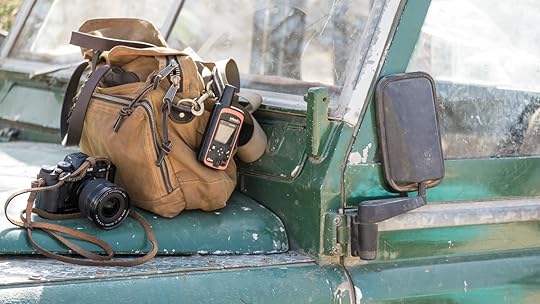Choosing Gear

It seems every photographer has a gear list on their blog. It’s so much silliness. Some do it to show how pro they are. Some to show off. But no one seems to talk much about why they choose their gear and that seems to be the more important question. There are so many great cameras out there, by all brands. The question “Is it good enough?” is almost irrelevant now. Below is a list of the gear I’m currently using, but that’s less important than understanding why I have chosen what I have.
I want cameras that are light, take a good beating, and produce great images. I like the weather-sealing of the Fuji XT bodies and their flip out screen. The in-camera live histograms are almost essential to me now and allow are to work much faster. I can use the Fujis, most of the time, faster than any camera I’ve ever used. I use them on full-blown assignment work in terrible conditions and they perform wonderfully. And I can put a bag with 3 bodies and 5 lenses into my Think Tank Airport Essentials (this is my Go-There bag) and almost always remain under the strictest carry-on limits.
My criteria for cameras, and the questions you might want to ask yourself, are these:
Do I like the look of the images?
Are the image files large enough for me? Too small? Too large?
Do I like how it handles and feels?
Can I carry it? All day?
Can it keep up with the work I do? This might mean speed of focus, it might mean insane high-ISO performance. I don’t need those, but I do need it to be rugged.
Does it give me access to the lenses I need?
Can I afford two of them?
The questions I ask myself when choosing a lens are these:
Is this a focal length I need, and for what?
Given the intended use, does it need to be fast (f/2.8 rather than f/5.6)?
Given the intended use does it need to be light?
Does it need to be weather-sealed?
Is it a good lens? You will define this for yourself, I just want to know if it generally gets solid reviews. Edge-to-edge sharpness isn’t something I fuss about.
Can I afford it?
Notice how the questions are all about how the gear relates to you and your needs, and none of them are about brand? This is a personal decision. No pro can help you with this. Know your needs. (If you don’t know your needs then it’s likely that any camera will work for you. Use something, anything, until you do know your needs.) Go to the store and hold the camera. Play with it. And in the end know that no matter what camera you buy it will have limitations and if you’re smart you’ll do what creative people always do: you’ll leverage those constraints, stop bitching about your gear, and go make something amazing.
If we spent more time analyzing our photographs as we did analyzing gear we’d make much better photographs no matter what that gear is.
Remember, please, that we are working with gear now that is so far beyond what past masters of this craft ever imagined and most of us have yet to touch the depth and humanity of that work. The real tools of our craft are not the camera and lens: they are mood and composition and the visual language of the photograph. Spend more time learning those and no matter what camera you use, you’ll make compelling photographs. (Read this post: The Photographer’s Tools)
This is the gear I use on a daily basis when I’m actually photographing, bearing in mind that things change a little as new technology emerges. Where I could I linked to the product on Amazon.
Travelling Gear
Cameras
Fuji X-T1 bodies
Fuji X-T2 bodies
Fuji X-Pro2 body
The X-T2 is my current camera of choice, with X-T1 or X-Pro2 bodies as backups. When my second and third X-T2 bodies arrive (back-order issues right now) that’s what I’ll use full time and I’ll pass my older gear on. The X-T1 bodies are great but the changes in the X-T2 are worth the upgrade to me: the dual card slots, larger 24mp sensor which is my personal sweet spot for sensor size), and improved ergonomics make a difference to me. I’ve been asked, Why not Sony? I just don’t like the feel of the Sony. I prefer the aperture dial on the Fuji lenses, the ergonomics are much more old-school and analogue-feeling to me. As for full-frame, that’s no longer an issue for me. It just doesn’t matter for the kind of work I now do.
Lenses
Fujinon 10-24mm – Found on my camera most of the time.
Leica 21mm (discontinued)
Fujinon 18-55mm – This is the least sexy lens I own but it’s light and sharp and I adore it. It’s a great all-around travel lens.
Fujinon 56mm – Beautiful portrait lens. There are two versions of this lens, I prefer the cheaper one.
Fujinon 55-200mm – I don’t always use it but it almost always comes with me now. A lot of reach in a small package.
Fujinon 100-400mm (safari and wildlife trips only)
Fujinon 1.4x, and 2x convertors (safari and wildlife trips only)
I almost always use two bags. One is my Go-There Bag, used to get my gear there but not usually great to work out of. I use the Think Tank Airport Essentials. The other is my While-There Bag: Usually a leather satchel or my Filson 24-Hour Tin Briefcase. Light, no padding, looks like a normal bag and is way more comfortable than a camera bag. If it’s the leather satchel, I just pack it flat in my suitcase, it’s pretty light. If it’s my Filson bag I use that as my other carry on, and move things around once I get to where I’m going.
Other Stuff
I carry 2 Think Tank SD Pixel Pocket Rockets filled with 64 and 128GB SD cards, a mix of Lexar and SanDisk. These are the ones I use now – right now 2 of them for $65 – that’s a lot of memory! I don’t worry too much about cards failing. It has yet to happen and I’m comfortable with 64 or 128GB. The labels on the cards face out when they’re formatted and ready to use, the face in when they’re used and need to be downloaded.
I also carry 2-3 Think Thank DSLR Battery Holders – they’re a little big for the Fuji batteries, but they work and I like to stay organized. The battery contacts face down when they’re charged and ready, and face up when they’re spent.
I don’t travel with a tripod much these days, but when I do it’s with the Gitzo Ocean Traveler – this tripod is discontinued now, probably because it was so silly-expensive, but this size, weight is a good compromise for me, especially with the smaller mirrorless cameras.
Underwater Gear
Nikon D800 bodies – If I were doing it now it would be D810 bodies – they have much larger buffers!
Sigma 15mm Fisheye
Nikon 16-35mm
Nikon 105mm Macro
Nauticam Housing
Nauticam Dome Port (acrylic)
Zen Dome Port (glass)
2x Sea & Sea YS-250Pro Strobes (These are now discontinued but they’re powerful and fast!)
My underwater gear goes in a ThinkTank Photo Logistics Manager. It’s huge.
Underwater photography has been a massive learning curve for me but such an intense joy and challenge. When I first started I wanted to make my Fuji system work but for a bunch of reasons it just didn’t. The housings weren’t up to the task and the lens selection wasn’t what I wanted at the time. It was a compromise. And really, no matter what gear I chose, to do it right was going to require a ton of it, so going light wasn’t really an option no matter what I did. If you want to go underwater with your cameras my suggestion is to find a dive photographer (huge thanks to Jason Bradley for doing this for me) who is willing to show you the whole kit from start to finish – how to take care of O rings, how to seal housings, teach you what you need to know about strobe choice and placement – books are good but hands-on is better. Barring that, go to a shop that specializes in dive photography and learn as much as you can. Look at Reef Photo as a starting place.
Questions?



